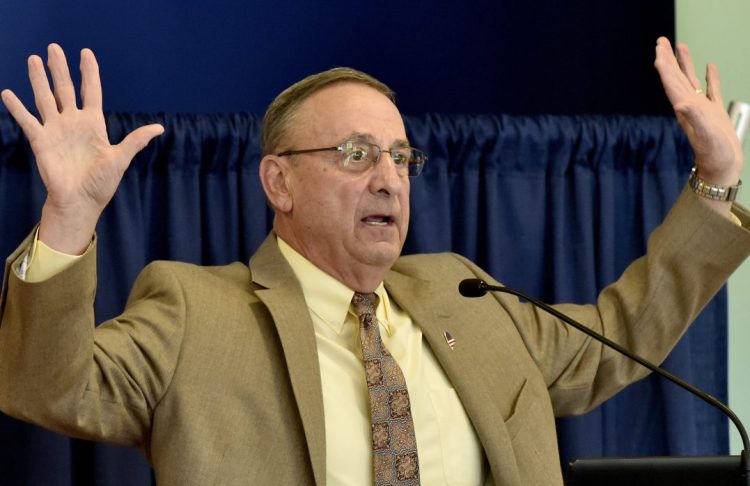Gov. LePage wrote this week of the state’s response to the opioid epidemic: “The Legislature’s focus on naloxone as the most important tool is sadly misplaced.”
Sometimes, you’ve got to wonder where he’s been.
The Legislature has for two years now been trying to move on from naloxone to the bigger items driving the crisis. Lawmakers have attempted to put in place what are widely acknowledged as the best rules surrounding the overdose-reversing drug, which is to make it accessible to as many at-risk people as possible. Yet at each point, the governor has stood in the way, forcing lawmakers to put time and effort into passing what should be no-brainer legislation – time that could be better spent tackling the more complex and costly components of the issue.
The governor wrote those words in the veto to L.D. 565, which would eliminate a sunset provision from a bill passed in 2016 allowing pharmacies to dispense naloxone without a prescription.
They didn’t have much traction with lawmakers, as the veto was overridden by the House and Senate. But the fight, unnecessary and time-wasting as it is, is far from over.
The Legislature still must deal with L.D. 1892, sponsored with bipartisan support by Democratic House Speaker Sara Gideon, which would eliminate all age requirements with respect to dispensing naloxone. It passed through a legislative committee with a 10-2 vote of support, and likely will head sometime next week to the full House and Senate, which should approve it so we can end this sad chapter in Maine’s opioid crisis.
L.D. 1892 sets out to finish what the Legislature started in 2016, when it passed a bill allowing pharmacies to dispense naloxone without a prescription to anyone over the age of 18, a step that an overwhelming majority of states have already taken in the face of increasing overdose deaths.
But LePage held up the implementation of the law for months, then pressured the Board of Pharmacy to raise the age to 21, leaving out a large group of Mainers who are struggling with addiction, or near someone else who is.
That forced lawmakers, who no doubt would like to move on from this matter, to revisit it once again.
Naloxone shouldn’t be this controversial. Time and again, we have heard from law enforcement and medical professionals who say naloxone should be the first, automatic step in the response to the drug problem, just as they argued at a Board of Pharmacy hearing Thursday. Also this week, the U.S. surgeon general used the office’s first public health advisory in 13 years to say that everyone who may need naloxone should have it.
There is no doubt we need treatment options for those who are already addicted, prevention programs for those at risk of becoming so in the future and interdiction efforts by police to keep drugs out of our communities.
But the first step is keeping people alive, and naloxone does that well, which is why most states have made it readily available, then moved on to the larger questions. LePage has made that impossible here.
Oddly, LePage said as much in the veto letter, writing, “To win the fight against abuse of opioids, we must get at the root causes and treatments of addiction, not simply offer the naloxone Band-Aid.”
The Legislature was doing just that this week, approving a Republican-sponsored bill with $6.6 million in new funding for medication-assisted treatment, the gold standard for treating opioid abuse. At the same time, LePage was busy devising new ways to keep a life-saving drug from the Mainers who need it.
Send questions/comments to the editors.



Success. Please wait for the page to reload. If the page does not reload within 5 seconds, please refresh the page.
Enter your email and password to access comments.
Hi, to comment on stories you must . This profile is in addition to your subscription and website login.
Already have a commenting profile? .
Invalid username/password.
Please check your email to confirm and complete your registration.
Only subscribers are eligible to post comments. Please subscribe or login first for digital access. Here’s why.
Use the form below to reset your password. When you've submitted your account email, we will send an email with a reset code.